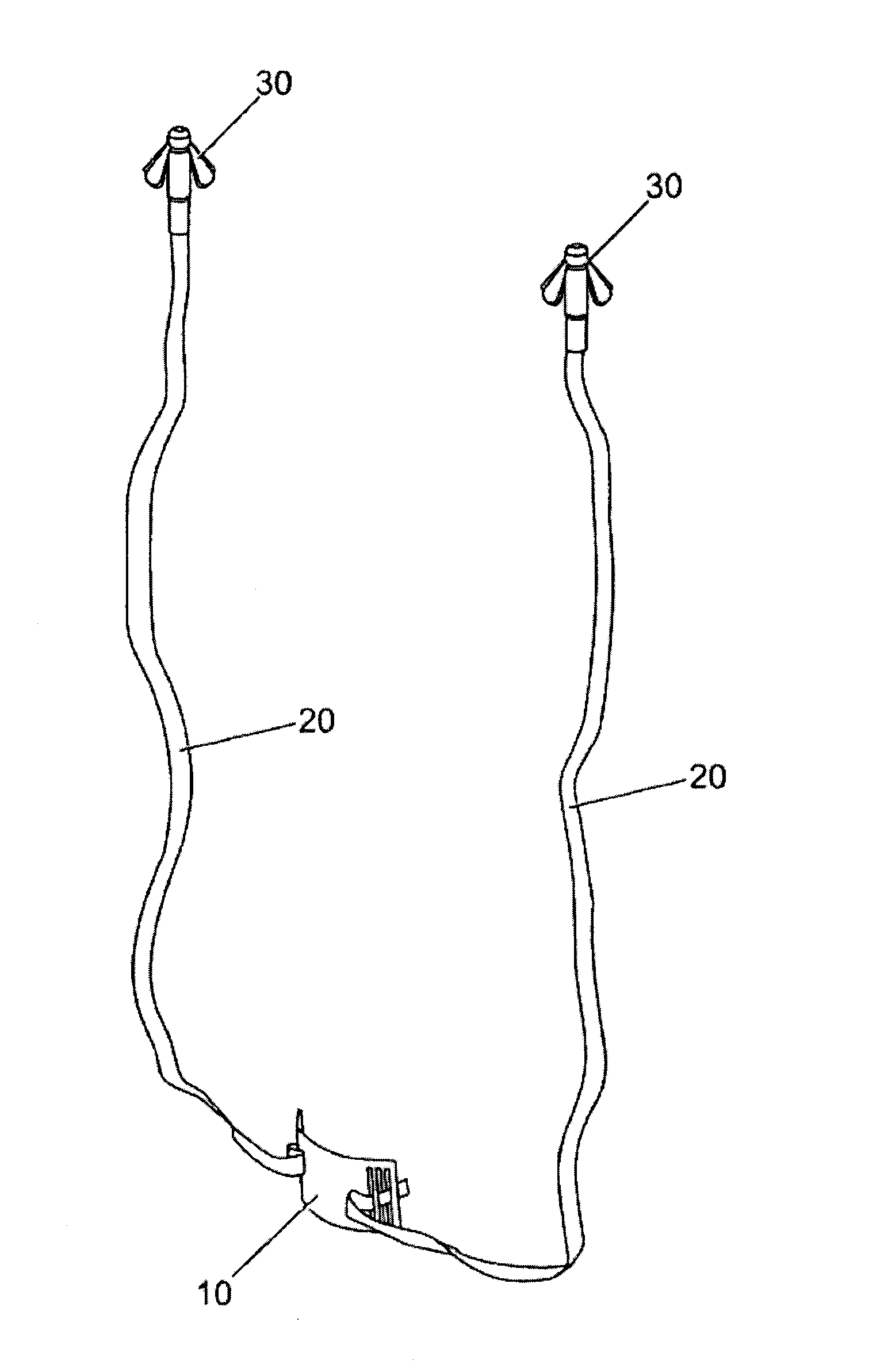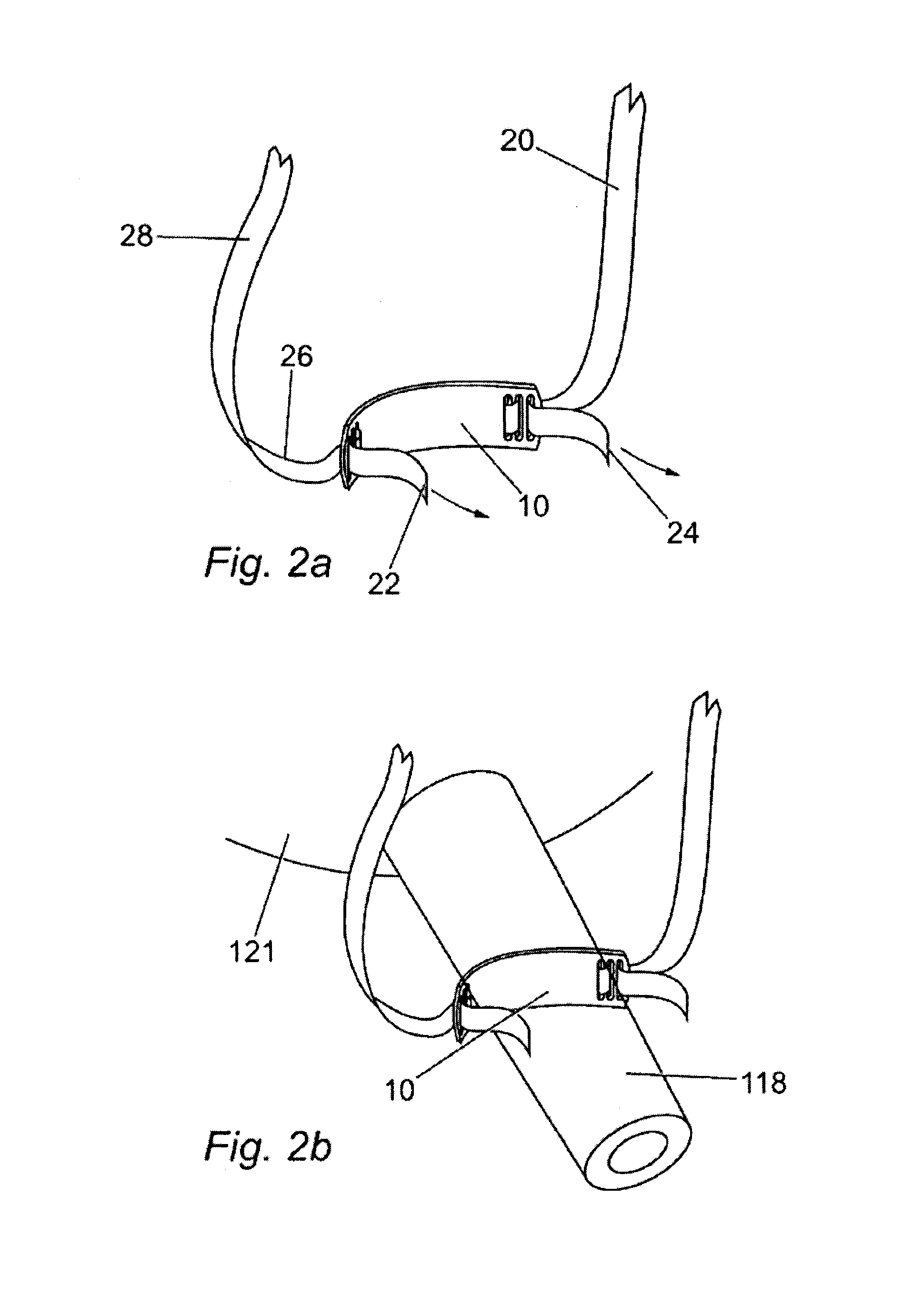Method for fibrous anchoring of a pelvic support
a pelvic support and fibrous technology, applied in the field of pelvic support fibrous anchoring, can solve the problems of high vascular injury rate, disadvantageous requirement for needles to exit the lower abdominal wall, and comparatively large needles used for inserting tapes, so as to minimize the medial presentation of the retaining means and hinder the movement of the implan
- Summary
- Abstract
- Description
- Claims
- Application Information
AI Technical Summary
Benefits of technology
Problems solved by technology
Method used
Image
Examples
first embodiment
[0604]In a first embodiment, retaining means 1920 are a plurality of projections 1922 extending laterally from the longitudinal axis of the implant. These projections 1922 are arranged along a substantial portion of the length of the fixing zone 196 such that when located in the tissues of the retropubic space they provide resistance at multiple levels within the fibro-fatty soft tissue and blood tissues of the para-urethral tunnel in a direction opposite to that in which the fixing zone 196 of the tape 192 is introduced into the tissues. This minimises movement of the tape out of the tissues of the retropubic space, even when a force is applied to the tape which acts to push or pull the tape out of the retropubic space.
[0605]Due to the multiple layers of fixation that can be achieved using the plurality of retaining means 1920 along a substantial length of the fixing zone 196 it is not necessary to insert the fixing zone through the rectus sheath 1944. This of significant advantage...
second embodiment
[0607]In a further second embodiment of the implant as shown in FIG. 32c, the implant further comprises resilient zones 197 interposed between the fixing zone and the supporting zone 194.
[0608]The two resilient zones 197 may comprise a geometric design of several strip portions conjoined at a first end to the supporting means and at a second opposite end to fixing means on the implant.
[0609]When not under tension these strip portions of tape material are bow shaped and are arranged such that they form a series of alternate and side by side convex and concave strips arranged in substantially the same plane as the tape.
[0610]On application of an extending force of up to 3N to the tape along its length, the tape can show 2-3 mm of extension, as the bowshaped portions of the tape are pulled into straight strips, the ends of the bowshaped strips being brought together, enabling extension of the tape. The movement of the tape from the resting bowshape into the tensioned straight strips of...
PUM
| Property | Measurement | Unit |
|---|---|---|
| force | aaaaa | aaaaa |
| force | aaaaa | aaaaa |
| length | aaaaa | aaaaa |
Abstract
Description
Claims
Application Information
 Login to View More
Login to View More - R&D
- Intellectual Property
- Life Sciences
- Materials
- Tech Scout
- Unparalleled Data Quality
- Higher Quality Content
- 60% Fewer Hallucinations
Browse by: Latest US Patents, China's latest patents, Technical Efficacy Thesaurus, Application Domain, Technology Topic, Popular Technical Reports.
© 2025 PatSnap. All rights reserved.Legal|Privacy policy|Modern Slavery Act Transparency Statement|Sitemap|About US| Contact US: help@patsnap.com



